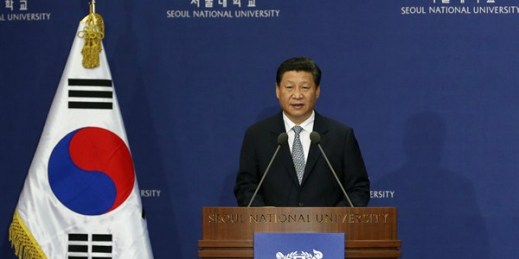
SEOUL, South Korea—Washington’s plan to shift its attention toward Asia, the famed “pivot,” has been postponed or at least slowed by the rash of crises in the Middle East over the past three years. But East Asia, as it turns out, is not waiting for the U.S. Major countries in the region, including America’s key allies and its top emerging rival, are actively jockeying for influence, assertively reassessing relations with their neighbors and generally stirring for what could become a significant realignment of power in the world’s fastest-growing region. America’s strategic and diplomatic position on the eastern shores of Asia […]
